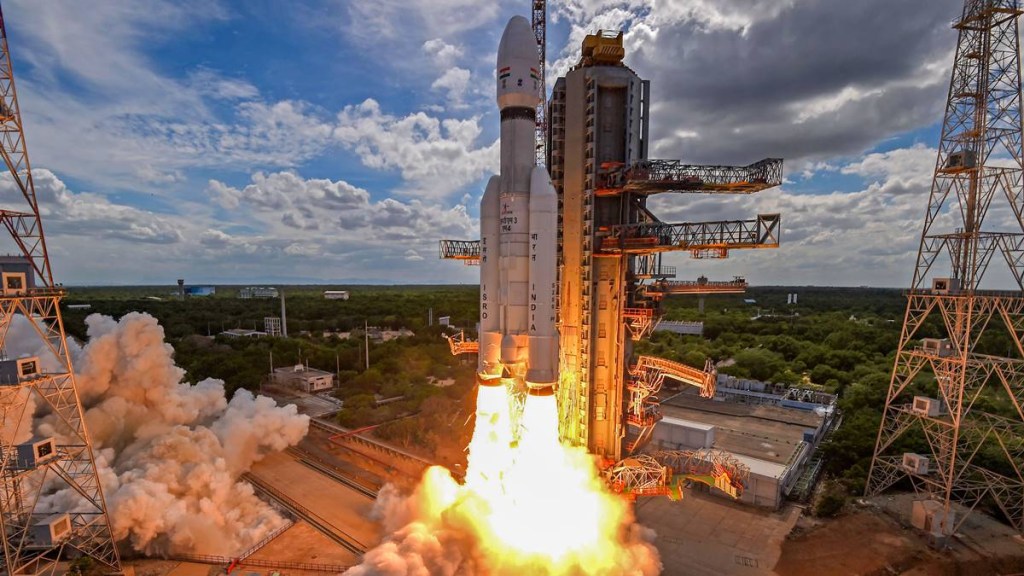Chandrayaan-3 latest update: The Indian Space Research Organisation (ISRO) shared big update on India’s Chandrayaan-3 mission on Monday. It said the spacecraft has now achieved a “near-circular orbit” around the moon. India’s ambitious third Moon mission’s spacecraft Chandrayaan-3, launched on July 14, has steadily reduced its orbit through a series of maneuvers, with the most recent one on August 16 marking a key step in its journey.
The Indian Space Research Organisation (ISRO) reported that the Chandrayaan-3 spacecraft is now in a near-circular orbit of 150 km x 177 km around the Moon. The next crucial operation is scheduled for August 16 at around 8:30 am. During this phase, the spacecraft will further lower its orbit to reach 100 km.
Landing module
The subsequent steps involve the separation of the landing module – consisting of the lander and rover – from the propulsion module. This will pave the way for the lander to undergo a controlled “deboost” maneuver, ultimately leading to a soft landing on the Moon’s south polar region on August 23.
ISRO Chairman S Somnath emphasised the intricate nature of the landing process, particularly the challenge of transitioning the lander’s velocity from a horizontal to a vertical direction as it approaches the lunar surface. Extensive simulations and algorithm adjustments have been carried out to ensure a successful landing and reduce fuel consumption.
Chandrayaan-3 is a continuation of India’s lunar exploration efforts following Chandrayaan-2. Its objectives include demonstrating safe landing capabilities, rover mobility on the Moon, and conducting in-situ scientific experiments. The mission comprises an indigenous propulsion module, lander module, and a rover equipped with scientific payloads for surface analysis.
The successful execution of Chandrayaan-3’s intricate maneuvers brings India closer to achieving its goals of safe lunar landing and advancing inter-planetary mission technologies.
India’s Moon Mission
Chandrayaan-3 represents the Indian Space Research Organisation’s (ISRO) latest venture into lunar exploration, building on the accomplishments of its forerunner, Chandrayaan-2. Designed to underline India’s expertise in secure lunar landings and rover maneuverability, this mission underscores ISRO’s dedication to advancing interplanetary technologies.
Featuring an indigenous propulsion module, lander module, and a rover, Chandrayaan-3 epitomizes ISRO’s commitment to pushing the boundaries of space exploration. The mission’s primary goals encompass achieving a meticulously controlled and accurate soft landing on the Moon’s surface, showcasing the rover’s mobility and scientific capabilities, and conducting on-site experiments to deepen our comprehension of the lunar milieu.
Through strategic orbital adjustments and meticulous planning, Chandrayaan-3 navigates its trajectory towards lunar exploration, leveraging sophisticated engineering to tackle the intricacies of lunar landing procedures. The mission’s success holds the promise of unlocking fresh insights into lunar geology, resource potential, and augmenting humanity’s cosmic knowledge.
Chandrayaan-3 launched on July 14
Since its launch on July 14, Chandrayaan-3 has undergone a series of strategic orbital maneuvers, progressively reducing its altitude and refining its trajectory. These precise maneuvers have been meticulously planned to ensure the spacecraft’s gradual descent towards the Moon’s surface.
The spacecraft’s advanced design and technological components are geared towards overcoming the challenges posed by lunar exploration, including the complex transition from horizontal to vertical velocity during the landing process. Chandrayaan-3’s success holds the potential to unlock new insights into lunar geology, resource potential, and further contribute to humanity’s expanding knowledge of the cosmos.

